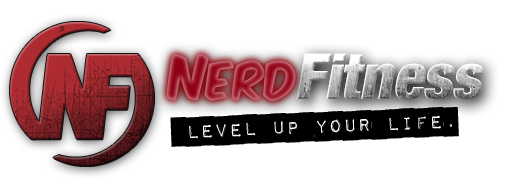

brianlitwin
-
Posts
3 -
Joined
-
Last visited
Content Type
Profiles
Forums
Events
Articles
Posts posted by brianlitwin
-
-
It's really important to find a connection between the work you put in and the benefits you get out. "Post workout soreness" isn't a great long-term metric to gauge the effectiveness of your workouts. It's subjective; difficult to say whether your more or less sore one week than the next.
Find objective metrics that align with your goals, and aim to improve them every workout. Establish some records in terms of weight, sets, reps, rest-periods, etc and try to break your records.. For example, it's going to be very difficult for you not to improve your lean body mass if you improve the amount of weight you can use for 3 sets of 8 in the squat and bench press. If you have these metrics in place, you'll get immediate feedback every workout on whether you're making progress or not.
Without good metrics to measure the quality of your workouts, the only thing you have to rely on is your internal sense of "how hard" you worked out. There's a few problems with that approach: 1) It's not fun! Grinding away and trying to subject yourself to as much discomfort as possible stinks. 2) It's hard to sustain for any length of time. You'll never approach two workouts with the exact same level of motivation, and if you're judging yourself solely on that, you'll get discouraged on days you feel slightly less motivated. And, 3) you can do all sorts of things that are incredibly hard and are completely ineffective. Endless jumping jacks can be brutal, but won't increase lean muscle mass.
Establishing and tracking your metrics and records will remedy those issues: 1) competing against your own records is fun and give you something to look forward to 2) beating your records will reinforce the rewards of your hard work and keep you motivated. 3) if you choose smart things to measure, like how much weight you can lift in compound exercises, you'll know that your work is paying off. And if the metrics you're using aren't working to advance your goals, you'll have information with which to reassess your program.
-
Start with ankle mobility. You hips have to stay over your feet when you squat, your femurs have to get out of the way somehow, and the only directions for them to go is over your knees or outwards. Usually people start by stretching their hips, and that's good to do, but the ankles are very often the limiting factor.
If your knees hurt when your knees travel over your foot during the squat, make sure you are squatting with the pressure spread evenly throughout your feet. If you can't squat to depth with even pressure in your feet (i.e. your weight is shifting to the front of your foot), ankle mobility is the limiting factor.
Box squatting can increase your depth immediately. Box squatting will teach you to break at the hips first, and you'll find a few inches of depth. You'll get an immediate sense of what good depth and tension in your hips feels like. However, def don't box squat if you've got back issues, and keep it light regardless. Use it as a learning tool/warmup. I think the correct way to squat is to break at the ankles first, as most athletic movements should start with the ankles, but box squatting can be a great learning tool for beginners.

Beginner seeking help for deeper squats
in Strength Training!
Posted
@kettlebellkungfupanda, that's over my head about the postural stuff haha. I've got some acute ankle issues from past injuries, real impingements, but I'm sure your advice about fixing posture will help. I can feel what you're saying just shifting my weight and posture subtly as I'm standing up at my desk. Ankle mobility is a bit of a sore subject with me, because I had a lot of strength coaches in the past when I was an athlete, and they always addressed squat depth with hip mobility stuff. I never heard one peep about ankle mobility until my athletic career was over and I started messing around with olympic weightlifting for fun.
about breaking at the hips verse the ankles..
I prefer breaking at the ankles, but, IMO, most novices' default impulse is to squat with too much knee and ankle emphasis and not enough hip engagement. So the box squat/ break at the hips cue is just an over-correction to get them incorporating their hips into the movement. Mind, this is only gleaned from a limited population of athletes I've worked with.
Issue is, most people learn pretty quickly that they actually have more leverage in the hips and back than they do in their quads, if they're built like the majority of the population, and then they swing in the opposite direction. You can see this pretty much all over youtube. It's def how I am, i.e. doing good-morning squats when the weight gets heavy. Not easy to fix nor worth getting too worked up over, but worth a conscious effort to try to break at the ankles and engage the quads. An interesting experiment is to do some vertical leaps with your hands on your hips. The arms provide a lot of horizontal momentum, swinging the torso when you jump, and a lot of people begin and power the jump with an aggressive torso swing. But if you take them out of the equation, you find yourself defaulting back to using your legs and breaking at the ankles. Sort of a hack to get your body back to using the movement pattern it feels strongest/ most explosive with.